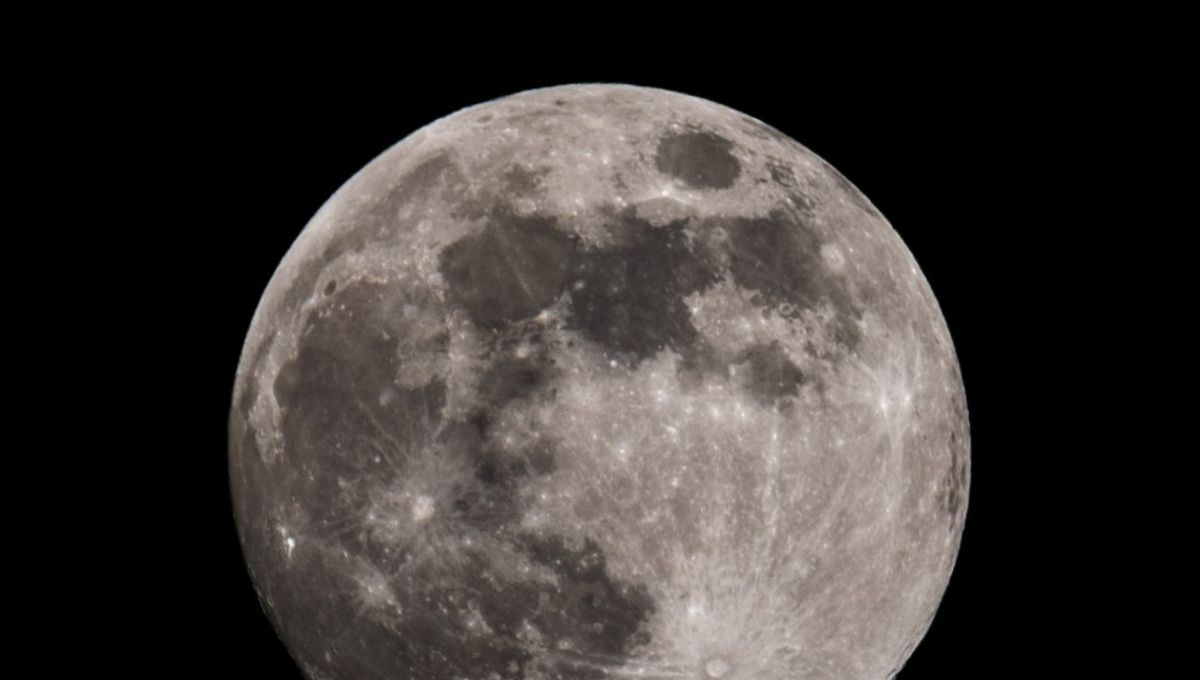
An international team of astronomers has found a way to make disagreeing estimates of the age of the Moon’s surface finally agree with each other. It turns out some features, such as the maria, which in many countries is referred to as the “Man in the Moon” are now estimated to be millions of years older than previously thought. The maria, also referred to as the “seas”, are dark basalt plains of hardened lava.
The ages of these structures are estimated by counting the number of craters on the surface. There is no longer any major geological activity on the Moon and without air and oceans the surface doesn’t change much, so craters don’t disappear. By counting them, we can work out if a part of the surface is younger or older.
We’ve also been to the Moon with the Apollo missions and collected rocks, as have robotic Soviet and Chinese missions. These rocks can be aged by looking at specific chemical signatures within. However, crater counting and the rock sample estimates do not match and this has been a problem.
“We decided that we had to reconcile these differences, and that meant correlating individually dated Apollo samples to the number of craters in the sample site surrounding area – in effect, resetting the crater clock,” Professor Stephanie Werner, of the Centre for Planetary Habitability, University of Oslo, said in a statement.
“We also correlated them against spectroscopy data from various Moon missions, especially the Indian Chandrayaan-1, to be sure which Apollo sample “belongs” to the surface in which we counted craters. This was a lot of work; we began this project in 2014. We found that by doing this we could resolve the discrepancy and push back the age of the surface of the Moon by up to 200 million years.”
The age of the Moon is still the same, roughly the same as the Earth. What has changed is the age of its surface. The new dating approach affects all areas of the Moon, but not all of them are affected in the same way. The oldest surfaces are the ones that change the most.
The team is particularly intrigued by the fact it pushes back the age of Early Bombardment – when the planets of the Solar System were getting pummeled by space rocks. The Imbrium Basin was created by an asteroid the size of Sicily and was then filled with lava creating the Mare Imbrium (visible in the top left of the Moon). The age of the mare has been pushed back from 3.9 billion years to 4.1 billion years. The bombardment took place a fair bit earlier.
“This is an important difference. It allows us to push back in time an intense period of bombardment from space, which we now know took place before extensive volcanic activity that formed the “Man in the Moon” patterns – the mare volcanic plains including Mare Imbrium,” Prof. Werner said. “As this happened on the Moon, the Earth was almost certain to have also suffered this earlier bombardment too.”
The findings were presented at the Goldschmidt Geochemistry Conference 2023.
Source Link: Dark Portions Of The Moon Are 200 Million Years Older Than Thought